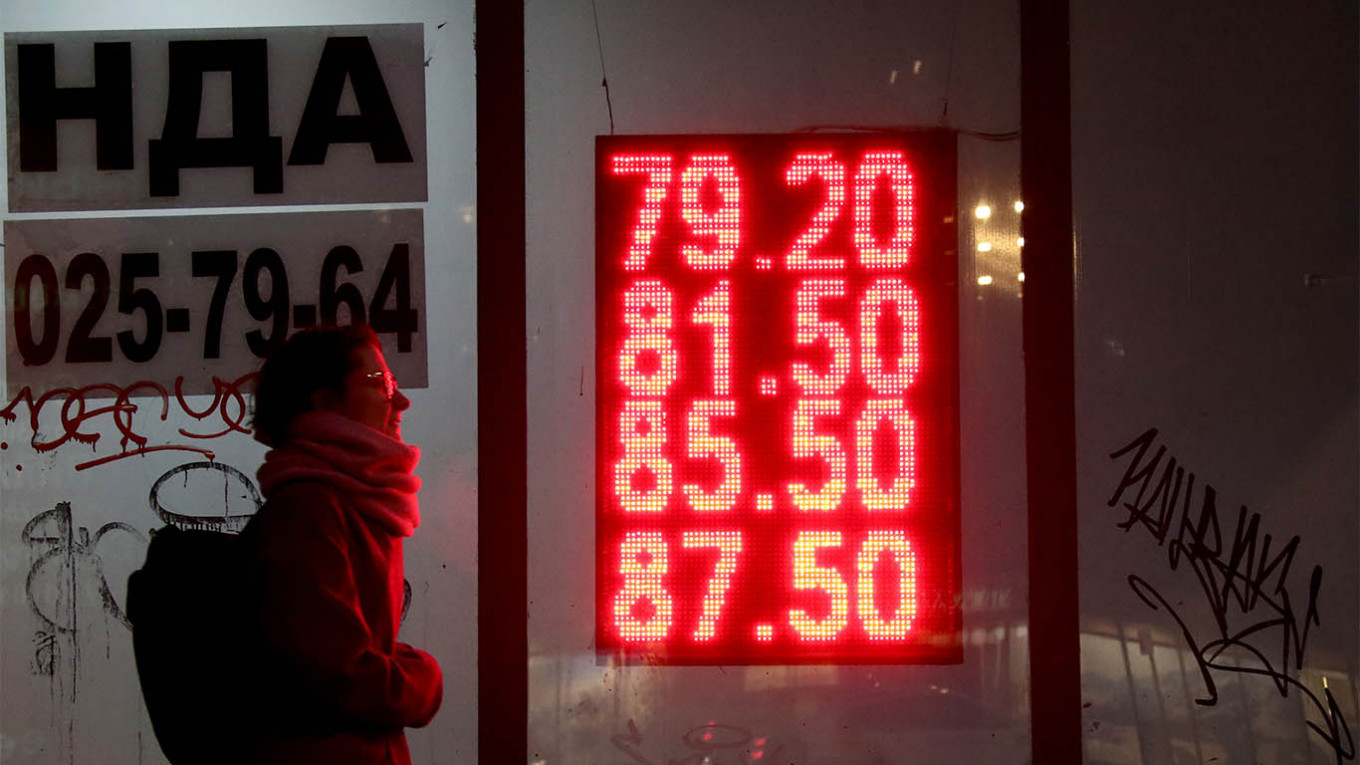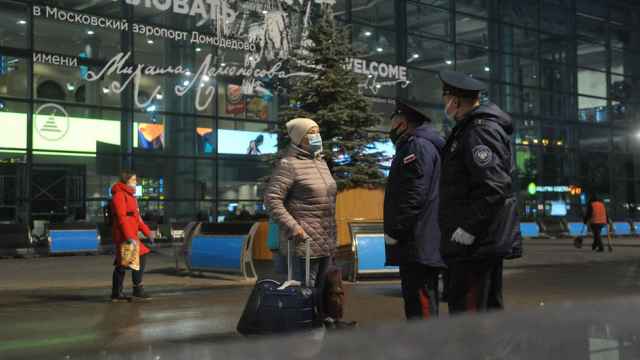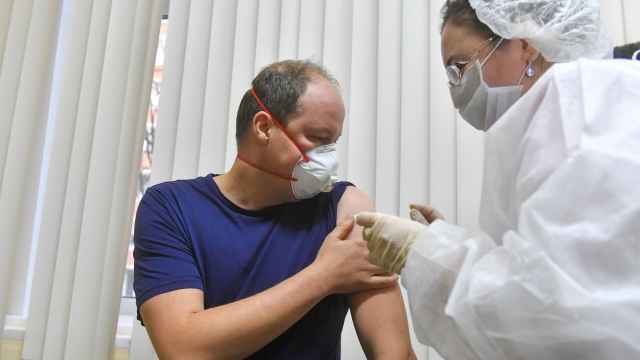The last week in Russia was abundant in black swan events, both for the financial markets and for ordinary people. On Monday, March 9, and the following day, when oil prices fell further in percentage terms than they had in the last thirty years, both armchair and professional analysts expected the ruble to collapse. Yet that didn’t happen: after falling sharply on Monday, the ruble gradually regained some ground, though it fell again — this time even further — on March 18.
Unlike during the last two crises (in 2008 and 2014), the market is overshadowed by corporate and bank debt right now, and liquid reserves amount to about $150 billion. That is more than enough to maintain a stable situation on the market and cover a shortfall in budget revenues for a fairly long period of time.
The fact is that during the last two crises, the Russian authorities learned what action to take when faced with a slump in oil prices, and for now, everything is being done according to best global practices.
The current turbulence, however, could be compared to a fire at an explosives warehouse during a flood and an earthquake, all at the same time. To understand how this crisis could develop, we should not be watching the ruble or the oil market, where events will unfold more slowly, but the government bond market, measures to lessen the consequences of the coronavirus pandemic, and the actions of foreign central banks.
In contrast with the key interest rate, the government bond rate is the true benchmark for mortgages and corporate and consumer loans. Two months ago, when the cycle of cutting rates was at its peak and the ruble had been gaining since the middle of 2019, the proportion of foreign borrowers on the Russian market reached its highest level in recent years: about 32.5%. Now, fearing growing risks, they will likely continue to pull their funds out of Russia, thereby increasing the pressure on the ruble.
Russian investors will also take a major hit. Institutional investors such as insurance companies and private pension funds will sustain losses that will have to be covered somehow.
Shorter-term investors will also have incentives to sell. The growth in rates has already started to impact on individuals and on business. At the end of last week, announcements came flooding in of hikes in mortgage interest rates, and next in line are individual and business loans.
Highly likely quarantine measures and restrictions on international and interregional contact (including trade) are creating a fairly unusual problem for regulators. A simultaneous fall in both supply and demand is extremely rare. In complex economies, a breakdown in production chains has a far greater impact than in simple economies.
The first half of this year is already guaranteed to be abominable for the global economy. China has begun to come out of quarantine and shock, but its recovery will take several months. That process will also be slowed down by the fall in consumption on the main markets for Chinese goods.
In Russia, quarantine has coincided with a collapse in the prices of its exports, which complicates the matter. On the one hand, the Russian economy is better protected from shocks thanks to its simplicity and inertia. In addition, closed borders have cut off some of its imports, creating new opportunities for domestic producers.
The announced increase in spending on infrastructure and social benefits will partially soften the blow of low oil prices.
On the other hand, entire industries — primarily transport and the service sector — will be forced to lay off workers en masse, sustain losses, and even go bankrupt. The damage to employment and economic activity will require large cash injections, and at a time when the budget was already going to feel the strain. Unlike in previous years, there can be no talk of “optimization”: such neoliberal methods will appear useless in comparison with the generosity of foreign governments, and with the plentiful coffers of the National Wealth Fund, which contain more than $150 billion.
One of the simplest ways to keep the economy afloat amid the current shocks is to cut the cost of loans, but this could damage the ruble’s stability.
On Friday, March 20, Russia’s central bank will make a decision on interest rates. Given the continuing descent of both the ruble and oil prices this week, the bank will likely have to raise rates, following the example of Kazakhstan, whose economy is even more dependent on oil.
Russia’s current key rate of 6% looks suffocatingly high, as the central banks of other countries slash rates to zero and even lower. At an emergency meeting on March 15, the U.S. Federal Reserve resolved to cut its benchmark interest rate to near zero and buy up assets — including Treasury bonds — worth at least $700 billion. But judging by the markets’ reactions, even those measures may not be enough, since the cause of the global shocks is not monetary in nature.
If in 2015–2016 Russia’s fiscal authorities could justify their refusal to cut rates with the need to fight inflation, that’s not the case now. Inflation was at 2.4% year on year in February, below the central bank’s target of 4%. This time around, accusations that the central bank is acting in the interests of financial speculators will look far more legitimate: the central bank is suffocating the economy, which is fighting on two fronts against low oil prices and limited consumption resulting from the pandemic.
If the central bank does raise the interest rate, the hike will be drastic—150 to 200 basis points — but short-term, with a rapid decrease as markets stabilize. Another option is to announce the purchase of government bonds by the central bank as necessary. Although this would partly play into the hands of speculators, it would in reality be a protective measure for domestic borrowers that could prevent the further desertion of credit markets.
The United States and the European Union made similar decisions following the 2008 crisis, and are deploying the same methods again now. In the current situation, Russia can allow itself to follow in their footsteps.
This article was first published by the Carnegie Moscow Center
A Message from The Moscow Times:
Dear readers,
We are facing unprecedented challenges. Russia's Prosecutor General's Office has designated The Moscow Times as an "undesirable" organization, criminalizing our work and putting our staff at risk of prosecution. This follows our earlier unjust labeling as a "foreign agent."
These actions are direct attempts to silence independent journalism in Russia. The authorities claim our work "discredits the decisions of the Russian leadership." We see things differently: we strive to provide accurate, unbiased reporting on Russia.
We, the journalists of The Moscow Times, refuse to be silenced. But to continue our work, we need your help.
Your support, no matter how small, makes a world of difference. If you can, please support us monthly starting from just $2. It's quick to set up, and every contribution makes a significant impact.
By supporting The Moscow Times, you're defending open, independent journalism in the face of repression. Thank you for standing with us.
Remind me later.






